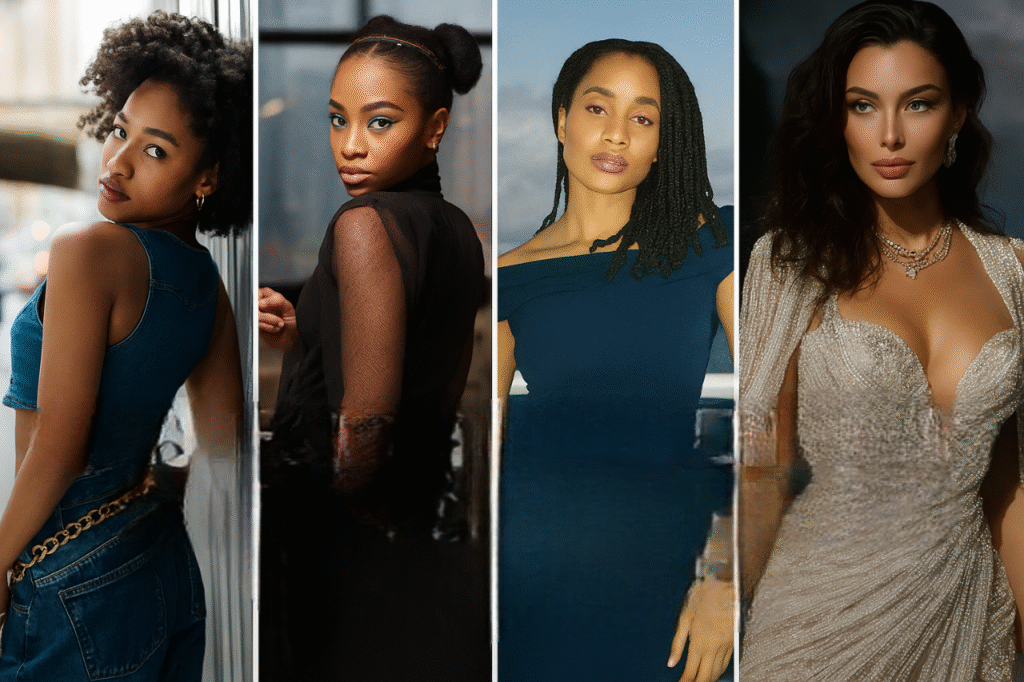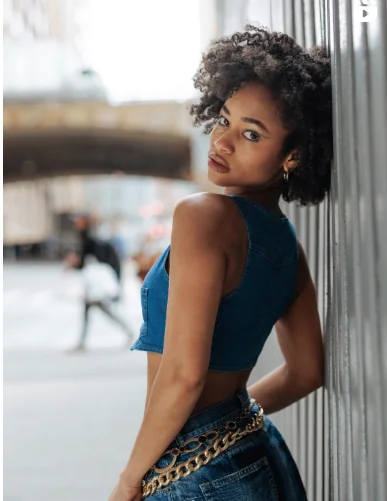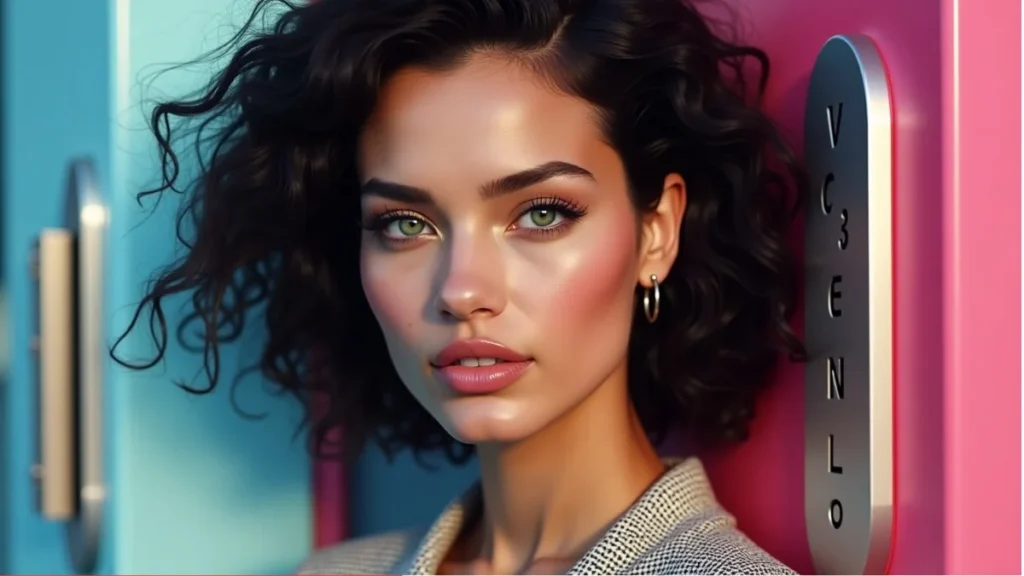Is This the End of Real Models?
In 2023, model Sarah Murray watched an AI-generated model wear a Levi’s denim dress—and felt a chill. Two years later, AI models are not just a concept; they’re walking straight into high fashion, front and center in a Vogue ad. The fashion world is on edge.
This article explores the growing use of AI-generated models in fashion, how it’s impacting real-world professionals, and why it’s sparking emotional and ethical debates. It’s not just about tech—it’s about identity, opportunity, and authenticity.
Key Takeaways
- AI models are cheaper and scalable, making them attractive to brands producing mass content.
- Real models, especially diverse ones, feel pushed out, raising concerns over “robotic diversity.”
- Vogue’s recent ad featuring an AI model marks a cultural shift in fashion’s relationship with tech.
- Fashion insiders are split—some see opportunity, others fear widespread job loss.
- Ethical questions around likeness and consent are intensifying as AI use expands.
The AI Model Revolution: Why It’s Happening Now
AI isn’t just revolutionizing finance and healthcare—it’s rewriting the very fabric of fashion. Brands once reliant on large photoshoots, stylists, and human models are now tapping into algorithms to deliver picture-perfect models in seconds.
For many brands, the math is simple: AI models are fast, cost-effective, and endlessly customizable.
As PJ Pereira from Silverside AI explains, “Marketing used to need four ads a year. Now it needs 400,000.”
That pressure to scale is cracking the old system—and AI is the fix.
The Spark That Lit the Fire: Levi’s and Lalaland.ai
The controversy didn’t start with Vogue—it began in 2023, when Levi’s partnered with Lalaland.ai to showcase AI-generated models of diverse backgrounds. It was supposed to promote inclusion.
Instead, it ignited backlash.
Why? Because instead of hiring real diverse models, Levi’s went digital.
Sarah Murray, a working model of color, described it as a gut punch:
“There are countless models like me dreaming of those gigs. Why replace us with something fake?”
The industry called it “artificial diversity,” and the phrase stuck.

Vogue Enters the Chat—And It Changes Everything
Fast forward to 2025. Vogue, the holy grail of high fashion, runs a Guess ad featuring a stunning, blonde, AI-generated model. Not on a website. Not in a digital campaign.
In print. On glossy pages.
This wasn’t just any magazine—this was Vogue. It sent shockwaves across the industry.
Fashion writer Amy Odell summed it up best:
“What Vogue does matters. If they say it’s okay, the industry follows.”
Even if the model only appeared in an ad and not an editorial, many in the industry felt the line had officially been crossed.
What Real Models Are Saying: Existential Threats
For commercial models, especially those from underrepresented backgrounds, this isn’t just about losing gigs—it’s about losing identity.
Sinead Bovell, a fashion model and founder of WAYE, explains:
“E-commerce models are the backbone of this industry. That’s how we pay rent. AI puts that stability at risk.”
And it’s not just job loss that worries people—it’s about control.
Contracts are increasingly filled with vague clauses about digital likeness and AI usage. Models like Murray worry they’re unknowingly signing away their rights to their own faces.

The Economics Behind the AI Model Boom
Behind every AI model is a simple truth: it’s cheaper.
Photo shoots are expensive. Booking models, renting sets, hiring photographers and stylists—it all adds up. But AI changes that equation completely.
Here’s how it works:
- Take a flat-lay product photo
- Feed it into AI software
- Generate a hyper-realistic model and setting
- Publish in hours, not days
Luxury consultant Paul Mouginot has seen it firsthand:
“You can produce images that look like real editorials. At a fraction of the cost.”
“Robot Cultural Appropriation” and Ethical Red Flags
One of the most troubling concerns? Brands generating diverse AI models without hiring real diverse people.
This is what Bovell calls “robot cultural appropriation.” Creating AI models that “look” inclusive, without actually being inclusive.
There’s also concern over how data is used. If a model’s face is used to train AI systems, shouldn’t they be paid for it?
Sara Ziff, founder of the Model Alliance, thinks so. She’s pushing for legal protections through the Fashion Workers Act, which demands:
- Clear consent for digital likeness use
- Compensation for AI-based model replications
Because what looks like innovation to brands feels like erasure to models.
Can There Be a Middle Ground?
Some insiders believe AI doesn’t have to replace humans—it can enhance their work.
Mouginot sees value in using AI to replicate a model’s likeness, allowing them to “be” at multiple shoots at once. This could create passive income for top models.
Startups like Artcare are already doing this. CEO Sandrine Decorde calls her team “AI artisans,” crafting synthetic models with human imperfections. Their biggest market? Kids’ fashion—where child labor laws create murky legal ground.
But Decorde warns:
“Too many AI models look the same. Perfect lips. Perfect skin. Perfectly boring.”
What Brands Need to Know: Authenticity Still Sells
While some brands rush into AI for cost savings, others tread carefully. Claudia Wagner, founder of Ubooker, says real value comes from purposeful use.
She warns:
“It’s not just about jumping on the trend. Consumers still crave real stories and real people.”
Her take? AI is here to stay—but it works best when combined with authenticity, not replacing it.
The Psychological Impact on the Fashion Audience
Let’s not forget the consumers.
We already live in a filtered, edited, retouched visual world. But when the models aren’t even real, where does that leave our self-image?
This is a psychological minefield, especially for young people:
- AI models set new “digital perfection” standards
- Real bodies feel increasingly inadequate
- The line between real and unreal blurs
As Murray put it:
“Modeling is already hard enough. Now we’re competing with flawless machines.”

What the Future Holds: AI Won’t Kill Human Creativity—If We Act Now
Fashion has always evolved with tech—from Photoshop to TikTok. But AI marks a different kind of shift. It changes who gets to be seen, and how we define beauty.
Here’s what might happen next:
- More legal protections for human likeness
- Growth of hybrid campaigns (AI + real models)
- Models building personal brands to stand out
- AI being used ethically to fill niche needs (e.g., baby modeling, dangerous shoots)
AI isn’t inherently bad—it’s a tool. The real question is: how will we use it?
Conclusion: AI Is a Mirror—Not a Monster
AI isn’t replacing fashion—it’s reflecting it. If the industry continues to use AI to avoid inclusivity, it’s just reinforcing old problems with new tech.
But if used thoughtfully, AI can:
- Improve accessibility
- Save resources
- Free creatives from tedious work
The line between synthetic and sincere is getting thinner. But one truth remains: AI will never tell a human story. Only we can do that.
